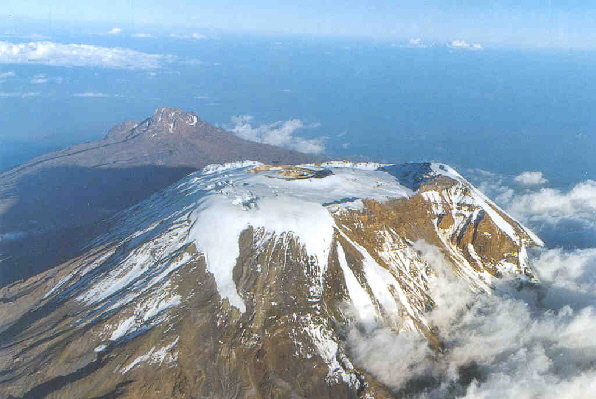A physicist from the University of Dar es Salaam has claimed that the snow cap on Mount Kilimanjaro would not disappear around 2017 as some scientists have suggested.
|

|
| Aerial View of Mount Kilimanjaro |
Ernest Njau, from the physics faculty of Tanzania's most renowned university, told local English broadsheet The Guardian on Thursday that a 430-year cooling period would start around 2060.
The physicist has resorted to the sunspot-climate relationship in his study which differs from the suggestion put forward by the Intergovernmental Panel on Climate Change (IPCC).
"This is contradictory to the predictions by the IPCC that had been holding that temperature will always be increasing over and over because IPCC does not use sunspot-climate relationship in its predictions," said the professor.
"It is on the basis of the (sunspot-climate relationship) prediction that the snow on Mount Kilimanjaro will not disappear," said Professor Njau.
A recent English university study has also suggested that the snow on Mount Kilimanjaro may not disappear by 2020 or 2030 as had been claimed previously.
The Portsmouth University has conducted an 11-day field study on the mountain top and had found out the temperature on top of the mountain was considerably below zero degree centigrade.
Estimates made through analyzing pictures taken in 1912 and then in 2001 have claimed that Mount Kilimanjaro has lost 82 percent of its snow cap which is factually an ice cover.
The 2001 study shocked the public with the warning that the snow cap on Mount Kilimanjaro would disappear between 2015 and 2020.
The warning was issued by Lonnie Thompson, a professor with the Ohio State University of the United States, who made an aerial survey of the famous mountain peak back then.
He claimed that comparisons with previous mappings showed that 33 percent of Mt Kilimanjaro's ice had disappeared in the last two decades and 82 percent had gone since 1912.
(Xinhua News Agency August 21, 2008)